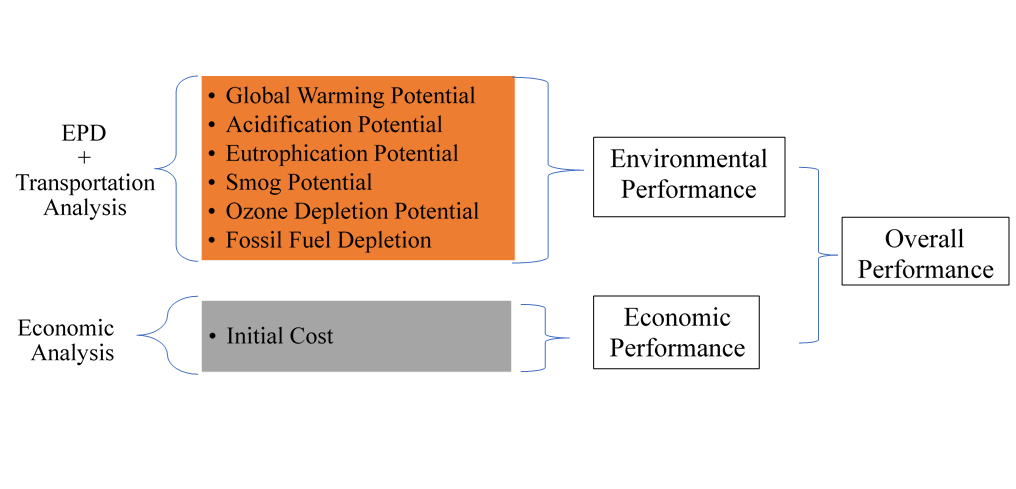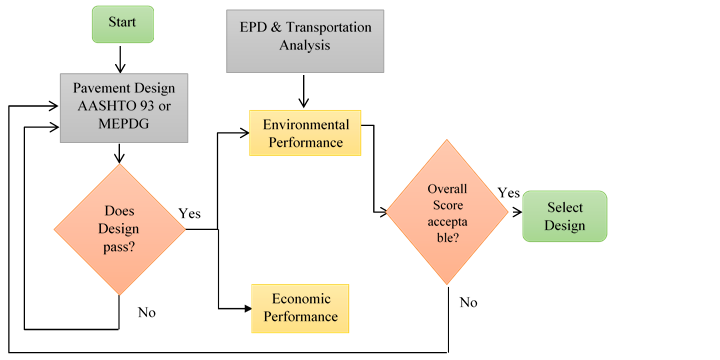SUSPAVDES MODEL
The software takes user input for pavement design, performance criteria weights, environmental impact categories weights, vehicular and fuel characteristics, distance from plant location to the job site and provides the cradle-to-gate environmental and economic performance.
The software evaluates economic and environmental performance for rigid pavement and only economic performance for flexible pavement based on user selection of pavement mixes from a library of 2382 existing pavement products.

WORKFLOW

Analysis Framework
For EPD analysis, the impacts data corresponding to the pavement design/mix is extracted from the EPD database and converted into the functional unit (yd3/lane-mile) to compute the total impact value for each impact categories. The computed values are normalized in terms of U.S. flows per capita per year. For transportation analysis, based on the defined vehicular and fuel characteristics, the corresponding inventory data, collected from U.S. LCI database is used to quantify the total emission. The computed emissions are converted into the respective impact categories by characterization model and normalized as in EPD. The normalized values from both analyses were added and harmonized by a set of weights. The overall environmental score was then obtained by adding all the weighted impacts scores. Corresponding cost data for the selected mix is extracted from cost database and converted into the present value to represent economic performance. The environmental and economic performance score is converted into relative scale. Relative scales are synthesized by a set of weights which were then added to represent the overall performance score.
Note: The developed framework evaluates economic and environmental performance for rigid pavement and only economic performance for flexible pavement.
